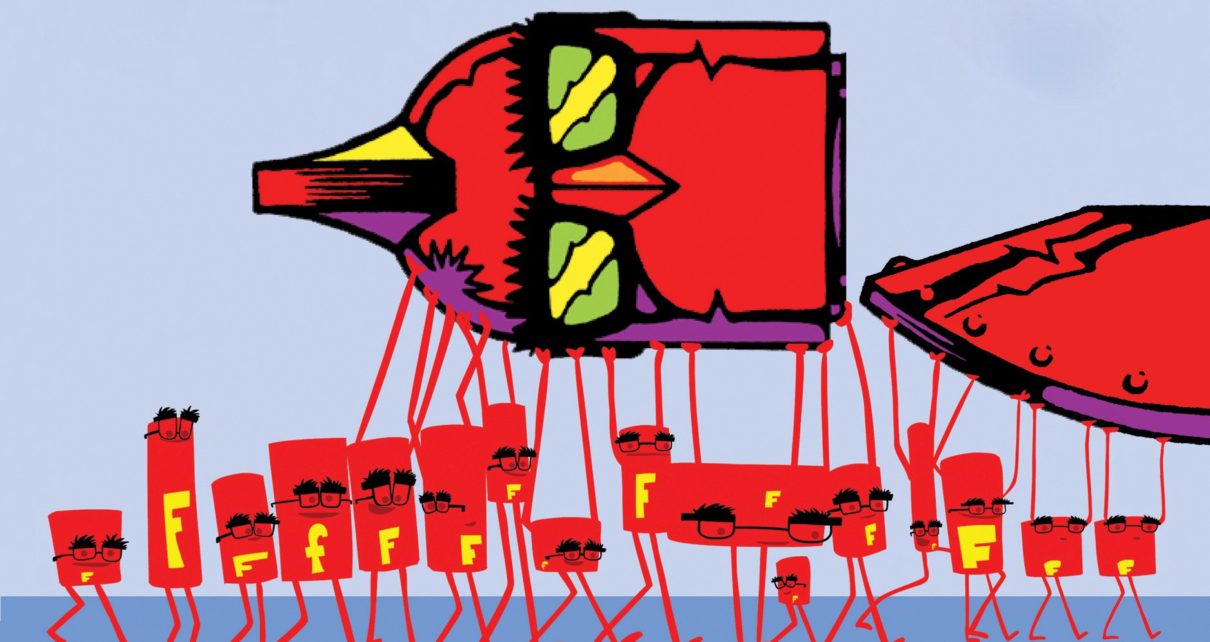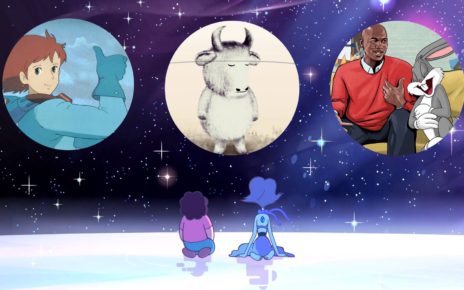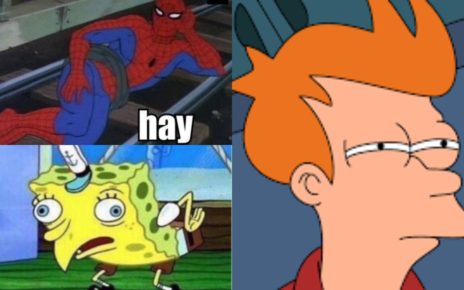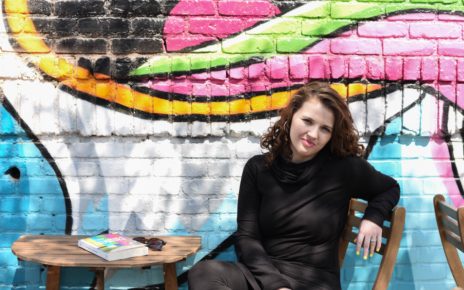A special Nicktoons Month! chat with the man who brought you everything from Dexter’s Laboratory to The Fairly OddParents.
Unless you’re a nut for the behind-the-scenes history of contemporary animation (hi guys!), you’ve probably never heard of Fred Seibert—at least not beyond noticing the card touting his executive production on, say, Adventure Time. Indeed, whenever Seibert’s name appears in a headline, it’s typically in an industry magazine that actually pays attention to things like media executives.
You do, however, know the names of the properties he was responsible for shepherding into the public consciousness. Dexter’s Laboratory. The Powerpuff Girls. The Fairly OddParents. Cow & Chicken. Courage the Cowardly Dog. My Life as a Teenage Robot. And, more recently (via the digital video networks of his company, Frederator), Bravest Warriors and Bee & Puppycat. You may not have heard his name until now, but if you’re between the ages of 18 and 40, he’s probably had a major influence on your childhood.

Before Seibert took the reigns of Hanna-Barbera Cartoons in 1992, his experience with animation was minimal, yet still influential: 1,000 ten-second network IDs for networks including MTV, Nickelodeon, Nick at Night, Comedy Central, Lifetime, Showtime, and the Movie Channel over a span of ten years. But by 1997, when he jumped aboard at Nickelodeon, Seibert had brought Hanna-Barbera cartoons back to the mainstream after decades of irrelevance, and helped bring a then-nascent Cartoon Network into the big leagues. And he did it with seven-minute, one-shot cartoons in an anthology format—a form and structure completely unheard of in the industry at the time.
When I sat down to speak with Seibert, tales of artists coming of age and what it actually takes to run an animation studio came pouring forth in a glorious wave of historical detail and juicy anecdotes—Seibert, unsurprisingly, is a masterful storyteller—to the point where we simply cannot do them justice here. For one, a lot of them weren’t even about Nickelodeon! What follows are those that are.
On how the sausage was made.
If you’re a young person animator in the early ‘90s, you got into the business when there was no business—when the basic cartoon product was shit. Which means that you became an animator because you so desperately wanted to be making cartoons that you didn’t care that there was no industry, you were just going to do it. So, what’s in those people’s heads? What’s in their heads are the kind of cartoons they grew up with, that generally were old cartoons, because all new animation was basically half hour sitcoms or adventure shows.
Nobody in 1993, in 1995, knew what a cartoon was anymore. They knew what animation was! But here I was saying, I want a cartoon. I set up parameters — seven minutes — and that was a dog whistle to traditionalists: Oh, he really means it, he wants cartoons, not animated sitcoms.
Well, their only model was a model that was 30 years out of date, so most of what was pitched was pitched as if 30 years hadn’t gone by, and they were pitching cartoons the way they used to be. It wasn’t until two generations later that we started getting pitches that reflected the fact that cartoons had come and gone. And now there was a new generation of people who wanted their version of cartoons, and you started seeing things that weren’t our pitches, but Chowder, Flapjack, Adventure Time. Those all came from new generations of cartoonists who had grown up with our shorts from the 90s and said, OK, this is our version of modern cartoons.

On moving from Hanna-Barbera to Nickelodeon.
Nickelodeon had no format that allowed for anything but a half hour. And at that time, again, ratings weren’t as wildly competitive as they became even five or six years later. I had a long, long relationship with the people who ran Nickelodeon. I’d literally known one of them since childhood, and I had known another one since college, and I had actually brought them both into Nickelodeon originally. So we go way back. And when I first went over to Hanna-Barbera, they scratched their heads for two different reasons. One is, Hanna-Barbera was seen as a failed, old-fashioned cartoon studio. And two, I was seen as a guy who had never made a cartoon, so what chance did I have to succeed?
So I stayed in touch with these folks all the way through my tenure at Hanna-Barbera. And little by little, it dawned on them that we were eating their lunch. At the very beginning, you know, Rugrats, Ren and Stimpy, and Doug were the new kings of the hill in the cartoon business, and then all of a sudden Nickelodeon started going sideways. They had hits like Hey Arnold!, but then they started doing stuff that wasn’t so special. They realized that all of the new cartoon shows that we were doing at Hanna-Barbera and Cartoon Network were starting to capture the psychic imagination of the audience. And Nickelodeon’s stuff was all of a sudden looking very old hat. And they also saw that what I had done was develop an incredible excited talent pool that at that moment wasn’t available to Nickelodeon.
So when I went in and pitched the idea of what became Oh Yeah! Cartoons as an anthology half hour, it sort of checked a lot of boxes for Nickelodeon that they themselves didn’t know how to check. So they were very willing to try an experiment to see how it would work. And it worked out like crazy.
On working at Nickelodeon and ludicrous executive conversations.
Interestingly, at Hanna-Barbera, I ran the shop, so I didn’t have to battle anybody. And by the way, at that point with What a Cartoon!, Cartoon Network didn’t even have a standards and practices department, so literally anything we came up with would go. And it wasn’t “my studio,” in quotes, but it was a studio that I ran, so it was my budget, not Cartoon Network’s budget.
When we got to making the deal with Nickelodeon, I made it a proviso that I got final cut on the shorts, which is unheard of in all of show business, that a producer gets final cut. But I had a long enough relationship with Nickelodeon and I had been successful enough at Cartoon Network that they said, “Look, you can get final cut on the shorts, as long as it passes standards and practices and you give our executives reasonable consultation. Let us see everything and make our comments.” Very unusual. “But when it goes to series,” they said, “we get final cut. It’s not your call anymore.” That was a compromise I was willing to make, because I felt that if you make the original film the way you want to make the film, you have a better than even shot of a series turning out the way you want it to. It didn’t always turn out that way, but that’s the way it was.
So early on — this was in 1997 — there was a pitch, or series of pitches. I sent the storyboards into the Nick executives, and I get a phone call. And they go, “Oh, you know, there’s really good stuff here,” says the executive, “but you know, there’s a problem. The language that your characters are using is not kid-friendly language.” What is kid-friendly language? What does that mean? “Well, they won’t understand all of those words.” I said, Oh yeah, that doesn’t bother me at all. He said, “It should.” I said, The way I look at it is, now, as an adult, when I look Looney Tunes, I realize how much I didn’t understand, but it didn’t stop me from loving those cartoons. So the executive says to me, “Well, you know that Nickelodeon cartoons are much more successful than Looney Tunes.” I was like, Excuse me? You mean these cartoons that have been around for 50 years? He says, “Oh, yeah!” I said, You mean if I went to Herb Scannell, the CEO of Nickelodeon, and I had the talent to make Looney Tunes — which I do not — and I told them I was going to make Looney Tunes, he’d say “No, Rugrats is more popular.” He goes, “Oh, yeah.” I said, Sorry, we’re keeping it this way.
It was the most ludicrous executive conversation — no, it is not the most ludicrous, but at the time it was the most ludicrous executive conversation I’d ever had creatively. It made no sense to me whatsoever. Because if the cartoon’s great, the fact that a couple of words don’t get understood doesn’t matter. And by the way, if the cartoon is any less than great, it doesn’t matter if all the language is understood. It’s kind of like determining a pop song by the lyric. Even if it’s by Bob Dylan, the lyric has to make sense within the context of a song, not by itself—like what the poetry is, or that type of thing. To me, this was a multilayered process.
Thanks for reading The Dot and Line, where we talk about animation of all kinds. Don’t forget to ❤ this article and follow us on Twitter and Facebook.





